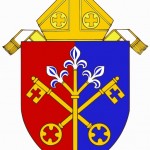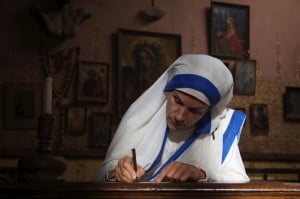 Introduction—What are we doing here? This is article #2 of a series of at least 22 articles which will appear over the next several months—but you should expect a couple of “inserts,” smaller posts which explain the early provincial councils, or a particularly thorny debate, in greater detail. Those who can do without the minutiae covered in these addendae will still end with a good overview of the complex issues which were resolved and the heresies which were refuted by the early church fathers.
Introduction—What are we doing here? This is article #2 of a series of at least 22 articles which will appear over the next several months—but you should expect a couple of “inserts,” smaller posts which explain the early provincial councils, or a particularly thorny debate, in greater detail. Those who can do without the minutiae covered in these addendae will still end with a good overview of the complex issues which were resolved and the heresies which were refuted by the early church fathers.
When we discuss these early councils, it’s important to remember that these issues are not specifically “Catholic.” There was only one Christian “church” at this time, the church which Christ founded. Dogmatic teachings on the nature and persons of the Trinity are accepted by Roman Catholic, Greek Orthodox, and Protestant Christians. Latins, Greeks and many Anglicans accept the decrees of the first seven councils.
A BRIEF GLOSSARY FOR NICAEA
Arianism—Arius believed that the Son is not of the same substance as the Father, but was created as an agent for saving the world.
Donatism—Named for Donatus, a fourth-century bishop of Carthage, who held that sanctity is essential for the administration of sacraments and church membership.
* * * * *
 The Council of Nicaea, in the year 325 AD., perhaps more than any other council is an event of highest importance in the history of Christianity. For the young church of the time, the Emperor Constantine’s support of the Christian faith was urgently welcomed.
The Council of Nicaea, in the year 325 AD., perhaps more than any other council is an event of highest importance in the history of Christianity. For the young church of the time, the Emperor Constantine’s support of the Christian faith was urgently welcomed.
Constantine had seen the Christian faith survive many persecutions, and even before his conversion, he sought to establish a positive relationship between Christianity and the Roman state. When internal disputes (such as the Donatist schism in the West, and the Arian struggle in the East) threatened the Church, Constantine asked the bishops representing the whole church of the empire to meet and resolve their conflicts peaceably.
Where Was the Council?—The site chosen for this meeting was Nicaea in Bithynia, a town near the emperor’s summer home of Nicomedia. Another advantage to Nicaea was that since it was located near the sea, it was within easy reacy of the oriental bishops.
When Was It Held?—This first general synod lasted from May 20 to July 25, 325 A.D.
Who Attended the Council?—Because the church had, by this time, spread great distances, few Western bishops were represented at Nicaea. The theologian Hosius, bishop of Cordova, was present. The three most important bishoprics of the East (Alexandria, Antioch and Jerusalem) were represented. Eusebius, bishop of Nicomedia, was an important voice at the council. Cesarea the historian, with a large number of others from the East, were in attendance. And Athanasius, who would later succeed Alexander as bishop of Alexandria, was present and played a prominent role arguing against Arius.
A Model for the Future—The Council of Nicaea proved to be the model for many that followed. Church officials, recognizing the danger of emerging heresies and divergent teachings, recognized that they must speak with one voice; and Nicaea established the authority of the pope and bishops to define Church teaching. The Council was conducted by means of a free debate; but once decisions were reached (such as the definition of Jesus which appears in the Nicene Creed, as “true God of true God, begotten not made, of one substance with the Father”), bishops who continued to dispute the Council’s decision were subjected to ecclesiastical excommunication and political exile. And although the emperor played a major role (funding the sessions, convening the sessions, and punishing recalcitrants), it was understood that the emperor acted only with the consent of the bishops and, most especially, with the consent of Pope Sylvester.
Major Decisions: The Nicene Creed—The primary focus of the Nicaean Council was on the Arian question, dealing with the relationship of Christ to God. Before Nicaea, only a small minority of believers strongly adhered to Arius’ view of the Son as a created being, and only a few adhered strongly to the opposing view of Alexander. Most of Christendom, then, fell somewhere in between—able to define what they did not believe, but stopping short offirmly stating just what they did believe. It remained the role of the Nicaean Council to define the position which would become the official doctrine of the Church.
The first creed to be brought before the Nicaean Council was an Arian statement of faith. This Arian position was met with a storm of indignation and hostility from a majority of the participants; and it appeared evident that it could not find acceptance.
A second creed was introduced by Eusebius of Caesarea, who submitted the baptismal creed of his community. However, Eusebius’ creed actually predated the controversy which Arius had introduced. Although Eusebius’ creed might have won easy acceptance and avoided controversy, Constantine recognized that eluding the difficulties in this way would not shield against future disputes. Therefore, he insisted that the Council continue its deliberations, and develop a Creed which could be generally accepted.
Constantine himself proposed an effective compromise: He recommended that the Caesarean creed should be modified by the inclusion of the Alexandrine words (including the term “identical nature”). His proposed model more clearly defined certain understandings of the faith, while deleting certain portions which were likely to fan the flames of controversy.
The Nicene Creed was the first dogmatic definition of the Christian Church, and has stood until the present time as a model for orthodoxy. Almost all of its expressions are drawn from the scriptures, with the addition of certain philosophical terms. In the Nicene Creed, the meaning of Scripture is made clear in the light of Tradition. The Son’s divinity is defined.
Continuing Struggle—The new Creed was not, as Constantine had hoped, the beginning of an age of harmony and peaceful coexistence. Rather than promoting peace, the Nicene Creed opened the eyes of many bishops to the significance of the problem it addressed. The Church faced its most serious challenge, with many bishops and faithful facing excommunication, rather than embracing the tenets laid before them.
The Easter Question—At the time of the Nicaean Council, there was agreement among Christians that Easter, the celebration of the Resurrection of Christ, was a day of great importance to the Church. However, observance of important Church feasts was not yet standardized by official action. The Nicaean Council decreed that (1) all Christians should observe Easter on the same day; (2) Jewish customs should not be followed; and (3) the practice of the West, of Egypt, and of other Churches should remain in force—namely, that of celebrating Easter on the Sunday following the first full moon after the vernal equinox.
Other Issues—While the Arian heresy has remained a focal point for study of Nicaea, the Council addressed 20 other disciplinary matters, such as the issue of “lapsed” (non-practicing) Catholics in the recent persecution, the question of “heretical baptism,” and diocesan organization.
Several canons had to do with the dignity of the clergy: the rank order of bishops, priests and deacons, as well as the ordination of eunuchs, or those insufficiently tested since Baptism or proved unworthy, of those who have denied the faith in persecution, and cohabitation of clerics with other than relatives of women beyond suspicion.
Canon 13 confirms the ancient practice of giving Communion to penitents at the hour of death.
Nicaea established a twofold criterion for the admission of heretics: those who have not erred on the doctrine of the Trinity were to be reconciled ithout repetition of their Baptism; while those who did not confess the Trinity remained unreconciled to the Church.
And a purely practical matter: On Sundays and the days of Pentecost, the faithful were to stand for reading of the liturgy, not kneel.











